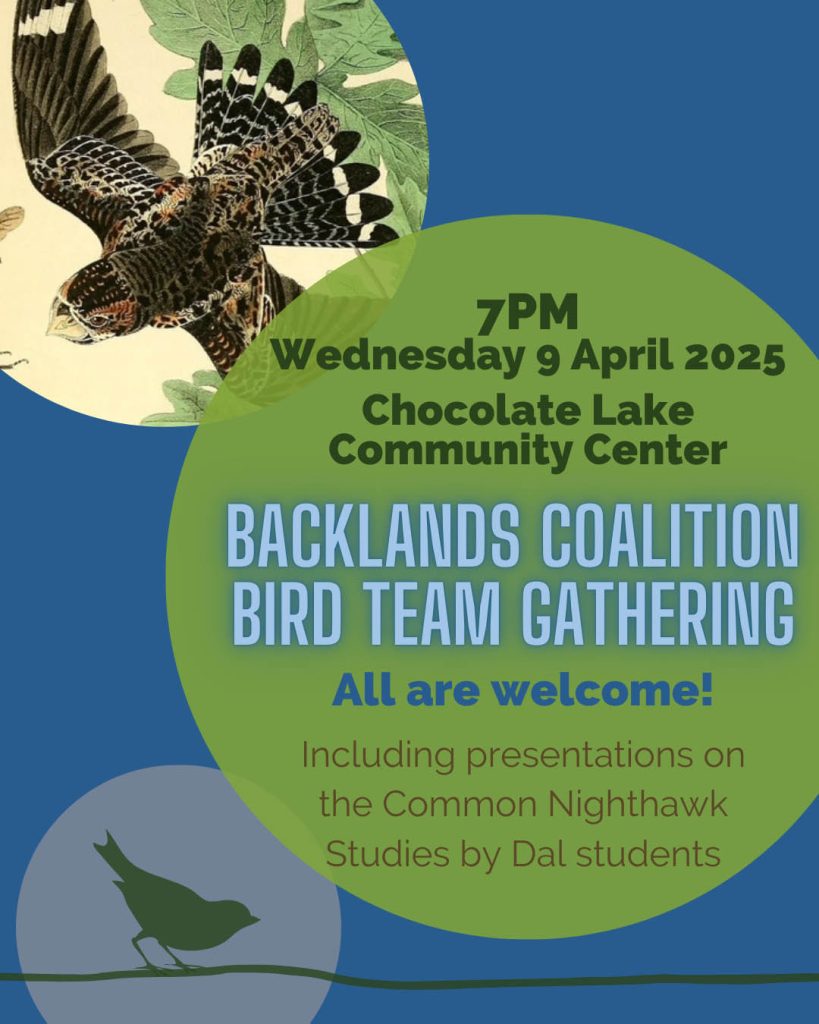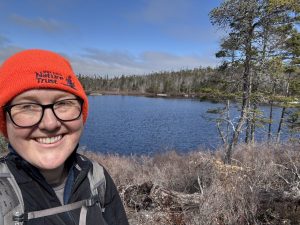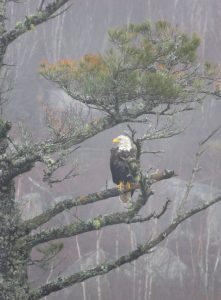-
Recent Posts
- Shaw Wilderness Park Re-opens 8Oct2025
- Birds of the Backlands: Hairy Woodpecker
- The Shaw Wilderness Park parking lot and trail closed Sep22-Oct17,2025
- Woods Ban lifted for parts of Nova Scotia including the Backlands 29Aug2025
- NS Provincial government rejects Halifax’s updates to its Regional Plan 12Aug2025
Recent Comments
- key fob duplication service on Northwest Arm Infill 4Dec 2023
- ThomasDrync on Nova Scotia Nature Trust ‘Marching in’ to save more Backlands 6Mar2024
- https://teslawiki.cz/index.php/User:ShannonAshe595 on Northwest Arm Infill 4Dec 2023
- ThomasDrync on Nova Scotia Nature Trust ‘Marching in’ to save more Backlands 6Mar2024
- Promyshlen_ewst on Northwest Arm Infill 4Dec 2023
Archives
- October 2025
- August 2025
- July 2025
- June 2025
- May 2025
- April 2025
- March 2025
- February 2025
- January 2025
- December 2024
- November 2024
- October 2024
- September 2024
- August 2024
- July 2024
- June 2024
- May 2024
- April 2024
- March 2024
- February 2024
- December 2023
- November 2023
- October 2023
- September 2023
- August 2023
- July 2023
- June 2023
- May 2023
- April 2023
- March 2023
- February 2023
- January 2023
- December 2022
- November 2022
- October 2022
- September 2022
- August 2022
- July 2022
- May 2022
- April 2022
- March 2022
- January 2022
- June 2021
- May 2021
- April 2021
- October 2020
- September 2020
- June 2020
- May 2020
- April 2020
- January 2020
- November 2019
- September 2019
- July 2019
- May 2019
- January 2019
- December 2018
- November 2018
- October 2018
- September 2018
- August 2018
- July 2018
- June 2018
- May 2018
- April 2018
- January 2018
- September 2017
- June 2017
- May 2017
- April 2017
- March 2017
- February 2017
- January 2017
- October 2016
- September 2016
- August 2016
- July 2016
- June 2016
- May 2016
- April 2016
- March 2016
- February 2016
- January 2016
- December 2015
- November 2015
- October 2015
- September 2015
- August 2015
- July 2015
- June 2015
- May 2015
- April 2015
- January 2015
- December 2014
- November 2014
- October 2014
- September 2014
- August 2014
- June 2014
- May 2014
- April 2014
- March 2014
- February 2014
- January 2014
Categories
- Backlands
- Birds
- Community
- Conservation
- Crown lands
- Events
- Exobasidium
- Fire Ecology
- Geoffrey Grantham
- Halifax Green Network Plan
- Halifax Regional Municipality
- HRM Greenbelt
- Invasive species
- Lakes
- Mi'kma'ki
- Nature Stuff
- Our HRM Alliance
- Parks and Protected Areas
- Recreation
- Regional Plan
- Shaw Wilderness Park
- Talks
- Trails
- Transportation
- Uncategorized
- Urban Wilderness Park
- Wabanaki Forest
- Walks
- Water Quality
- Watershed
- wetlands
- Williams Lake
Meta
-
-
-
-
-
-
-
-
Wed, Apr 9, 2025: Backlands Coalition Birds Team Gathering
Posted in Backlands, Birds, Community, Conservation
Comments Off on Wed, Apr 9, 2025: Backlands Coalition Birds Team Gathering
Thursday Apr 10, 2025: Spotlight on Spryfield Presentation on Edible and Endangered Plants
Posted in Backlands, Community, Recreation
Comments Off on Thursday Apr 10, 2025: Spotlight on Spryfield Presentation on Edible and Endangered Plants
Backlands Suites Gallery Document available as PDF 6Apr2025
 The Backlands Suites Exhibition at the Chase Gallery opened on April 3. Yesterday (April 5), there was a well-attended and much enjoyed and applauded Afternoon with the Artists.
The Backlands Suites Exhibition at the Chase Gallery opened on April 3. Yesterday (April 5), there was a well-attended and much enjoyed and applauded Afternoon with the Artists.
The exhibition remains open until April 28 (2025).
In addition to Frances Dorsey’s Curatorial Statement which is available on this website, the Backlands Suites Gallery Document includes profiles of the nine contributing artists.
While there are a few copies which can be viewed at the Gallery, those are not for distribution. However, a PDF of the document is available here:
Download/View Backlands Suites Gallery Document
(PDF, 12.7 MB)
Posted in Community, Events
Leave a comment
HRM 2026-2030 Strategic Plan 2Apr2025

Project overview:
– the 2021-2025 Strategic Priorities Plan is in its last year and staff and Regional Council are developing the 2026-2030 Strategic Plan
– we are now seeking input from residents on the most recent draft content for the 2026-2030 Strategic Plan
– the plan will be fixed-term to the four-year term of Regional Council and aims to advance goals and actions that address the municipality’s most pressing issues
= to date, the project’s research phase has been completed, along with workshops with administration’s senior leadership and Councillors
– in the “documents” section of this page, you will find the draft content for the 2026-2030 Strategic Plan, along with supporting information
Read More
Posted in Community, Conservation
Leave a comment
Reflections by Purcells Pond 1Apr2025
Writes Liv Monck-Whipp, Nova Scotia Nature Trust Stewardship Coordinator
It’s funny how time works, and it’s funny how brains work.
Almost exactly 1 year ago, I had my first field day as the new Stewardship Coordinator with the Nova Scotia Nature Trust; Joanna Skomoroski, our Stewardship Manager, took me out to the Purcells Cove Conservation Lands to look at the trail system and do some baseline surveys. It was my first day learning about this unique and beautiful place, and I was very glad to be out of the office and on the land to see the work the Nature Trust does.
I was blown away by the stark beauty of this area, made all that much starker by the late winter, early spring season with deciduous leaves not yet out. The trail provides spectacular views of the granite ridges, which pop with light green lichens, the Jack Pines and Black Spruce forests dark against the sky, and of course the pond, which is an intense blue.
And now, a year later, I find myself walking the same trail, looking for other areas where we might do some maintenance work for the many community members who use it. The cycle continues. As I take a step down on the trail, I remember vividly: that exact rock was where I rested briefly when doing some of the trail maintenance work last year.
Read more on Nature Trust Blog
Posted in Community, Conservation, Nature Stuff
Leave a comment
Sunday April 13, 1-4 pm: Gathering in the Halifax Backlands to Celebrate Earth Week
 Please join us for a guided hike through the rugged Halifax Backlands, home to two of the Treasured Wetlands of Nova Scotia, and a lot more. Explore this unique wilderness while contributing to real conservation science!
Please join us for a guided hike through the rugged Halifax Backlands, home to two of the Treasured Wetlands of Nova Scotia, and a lot more. Explore this unique wilderness while contributing to real conservation science!
Learn how to use Naturalist, a free app that helps identify and log local species, adding valuable data to a community science project. Your observations will support ongoing research and conservation efforts in the region.
Expect a slow pace, moderate terrain with some off-trail hiking. To fully participate, bring a smartphone with the Naturalist app downloaded.
Register at https://ecologyaction.ca/get-involved/events/earth-day-hike
Hosted by @ecologyaction & @ourhrmalliance, in partnership with @hfxmoments, @atlanticducks, @TWNovaScotia and @backlandscoalition
Posted in Community, Conservation, HRM Greenbelt
Comments Off on Sunday April 13, 1-4 pm: Gathering in the Halifax Backlands to Celebrate Earth Week
Explore the unique beauty of the Halifax Backlands though the eyes of nine talented artists April 3-29, 2025 at NS Archives
 UPDATE Apr 9, 2025.
UPDATE Apr 9, 2025.
View Nine talented artists explore the unique beauty of the Halifax Backlands
Global News Video Apr 9, 2024, 5:26 mins “We check in with two of the nine local artists who have come together to bring the unique urban wilderness of the Halifax Backlands to art and nature fans in the city. The Backland Suites exhibition is on throughout April at the Chase Gallery.”
UPDATE Apr 6, 2025: Backlands Suites Gallery Document available as PDF
ORIGINAL POST
The Backlands Coalition has a special Art Exhibit, The Backland Suites”, coming up at the Chase Gallery in the NS Archives for the month of April.
The exhibit explores the unique beauty of the Halifax Backlands though the eyes of nine talented artists.
The exhibit is curated by Frances Dorsey. Please view Frances’s Curatorial Statement in which she introduces the artists.
Please join us for an -afternoon with the artists to kick off the series on Sat Apr 5, 2025, 1-3 pm at the Chase Gallery, 6016 University Ave., Halifax. View Invitation Poster
Posted Mar 12, 2025
Posted in Community, Conservation
Comments Off on Explore the unique beauty of the Halifax Backlands though the eyes of nine talented artists April 3-29, 2025 at NS Archives
HRM Minimum Planning Requirements 1Feb2025
 Received Jan 27, 2025 from HRM:
Received Jan 27, 2025 from HRM:
“Since the Phase 4 What We Heard Report was presented to Regional Council in December 2023, staff have been working to finalize the new Regional Plan and full package of amendments.
“On August 21, 2024, the Province of Nova Scotia adopted new Minimum Planning Requirements Regulations. These requirements are intended to prioritize increasing housing supply in land-use planning, regulations, decisions, and development approvals under the municipal planning strategy (the Regional Plan). The legislation requires the municipality to make changes to its plans and by-laws to meet these requirements. On October 1, 2024,* Regional Council directed staff to consider the Minimum Planning Requirements as part of the Regional Plan Review process.*Link is to the Agenda. Also view Minutes and Video.
Continue reading
Posted in Community, Halifax Regional Municipality, Regional Plan
Comments Off on HRM Minimum Planning Requirements 1Feb2025
Etu’qamikejk Trail 14Jan2025

Entrance to Etu’qamikejk Trail – a “Place Where Two Sides Meet” – by Etu’panuek (Williams Lake). View sign
The single-track trail begins just to the left of the sign.
Click on images for larger versions
NCC/HRM (Nature Conservancy of Canada/Halifax Regional Municipality) have not yet made a formal announcement about the “Etu’qamikejk Trail” in the SWP (Shaw Wilderness Park)* but the signs have been up for a few months. I have been getting questions about it, so here’s some info. about the name and the place.
– david p
Jan 14, 2025
__________
*The Shaw Wilderness Park formally opened in 2020. It is owned by HRM while NCC holds a conservation easement for the Park, an arrangement proposed in 2016 after the land came up for sale. See Williams Lake Conservation Company: Halifax’s New Shaw Wilderness Park for details.
Posted in Community, Mi'kma'ki, Parks and Protected Areas, Shaw Wilderness Park, Trails, Wabanaki Forest, Williams Lake
Comments Off on Etu’qamikejk Trail 14Jan2025
Sunday Dec 15, 2024: Xmas Bird Count for Hfx/Dartmouth
Next Sunday, December 15th 2024 is the date for the Halifax /Dartmouth Christmas Bird Count. Started in 1900, there are now counts being done in a number of countries, including Canada, USA and a number of Latin American and Caribbean countries.
Anyone wishing to participate is encouraged to access this page (https://www.nsbirdsociety.ca/calendar/upcoming-events) and scroll down to the count(s) of interest to you.
Thx to Bernie M. of Halifax Field Naturalists for the reminder. Continue reading





